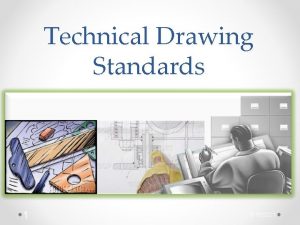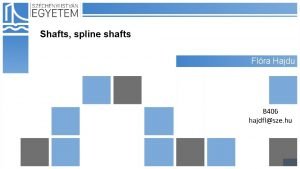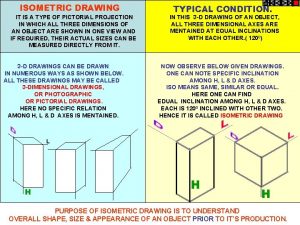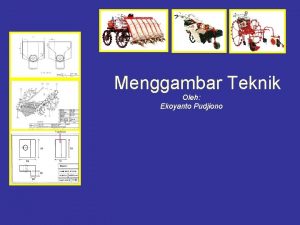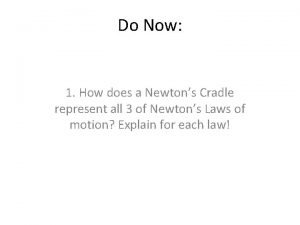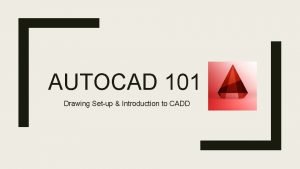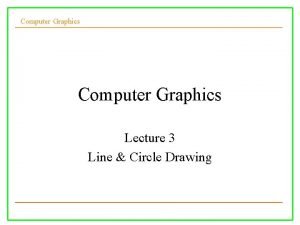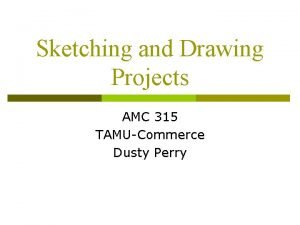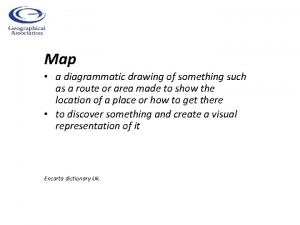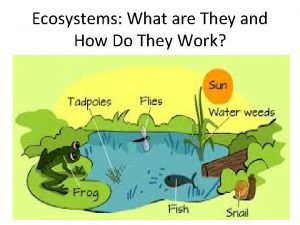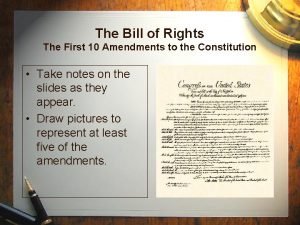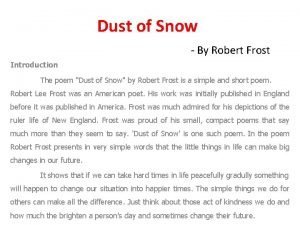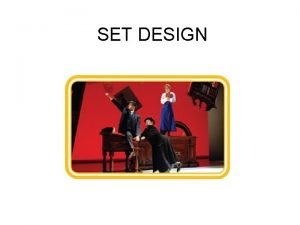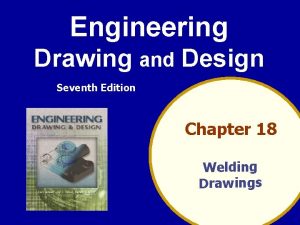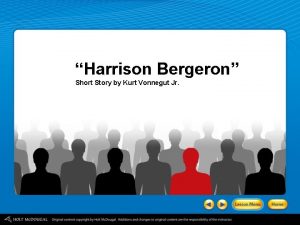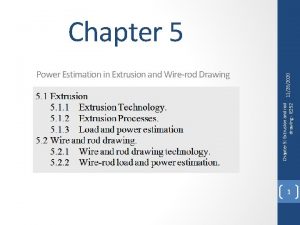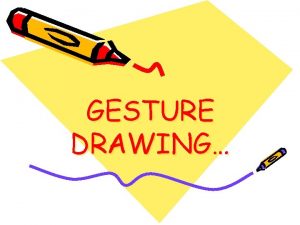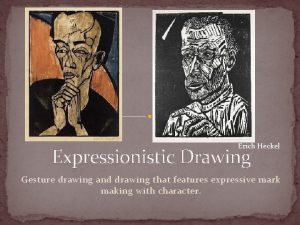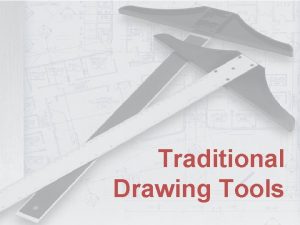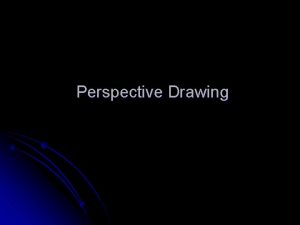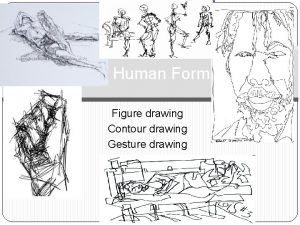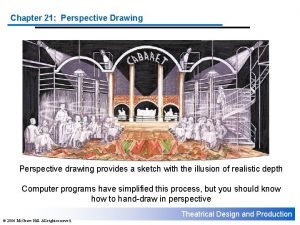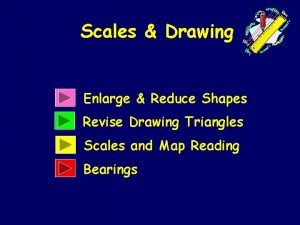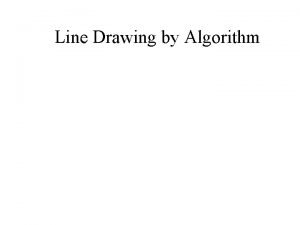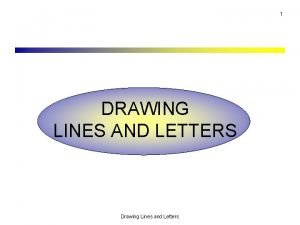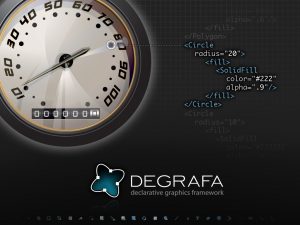DRAWING D VINOTHINI 1 What is drawing Drawing




























- Slides: 28

DRAWING D. VINOTHINI 1

What is drawing Ø Drawing is at the heart or soul of an artists way to express themselves , creative way to express the feelings and thoughts of an artists Ø A drawing can be a sketch, a plan, a design, or graphic representation made with the help of pens, pencils, or crayons. 2

Origin of basic drawing Paper: Ø The precursor to modern paper dates back to 2 nd century BC in china. Ø From china , the paper making process spread to the middle east, the to medieval Europe in the 13 th century , where the first water powered paper mills were built Ø In 1844, Canadian inventor CHARLES FENERTY and GERMAN F. G KELLER independently developed processes or pulping wood fibres significantly lowering the cost Ø Modern day paper is a thin material produced by pressing together moist fibres, typically cellulose pulp derived from wood, and drying the into flexible sheets 3

Pencil: Origination of the word pencil: Ø Old French – “PINCEL” –fine paintbrush Ø Latin – “PENICILLUS”- a little tail Evolution 4

GRIPPING THE PENCIL SCRIBE GRIP: Ø The scribe’s grip that feels natural for most people is surely the worst grip for drawing: writing and drawing are fundamentally different activities. Ø Writing is done with the minute motions of the hand fingers , with the elbow fixed Ø Drawing is done with broad movement of the whole arm, from hand to shoulder-blade. 5

6

PEN GRIP: Ø Hold the pencil like you would hold the writing pen, but much further from the tip Ø This grip is good for detailing , and for small size sketching Ø It is also the grip Waco tablets are designed for. 7

8

VIOLIN BLOW GRIP: Ø Hold the pencil with the thumb against all our fingers. This removes most control from the fingers, and emphasizes the wrist and especially the arm at elbow and shoulder Ø This grip is the preferable basic drawing grip Ø It produces flowing, economical sweeping line and ideal for rough sketching. 9

10

BRUSH GRIP: The pencil is held upright and the back edge rests on the base of your thumb This grip is perfect for creating light and delicate marks It is also great for when you are making visual comparison on the surface and laying out the composition 11

12

COMMON DRAWING MEDIUM: Ø Pastel –oil pastel Ø Charcoal Ø Colored pencil Ø Crayon Ø Graphite –can be pencils which are small or large sticks similar to charcoal Ø Marker Ø Pen and ink 13

TYPES OF DRAWING: Ø Life drawing Ø Emotive drawing Ø Sketching Ø Analytic drawing Ø Perspective drawing Ø Geometric drawing Ø Diagrammatic drawing Ø Illustration drawing 14

LIFE DRAWING: Ø Drawings that results rom direct or real observations are lie drawings Ø Life drawings also known as still-life drawing or figure drawing, portrays all the expressions that are viewed by the artists Ø Life drawing is applied to sculpture, medical illustration, cartooning, and comic book illustration, and other fields 15

EMOTIVE DRAWING: Ø Similar to painting, emotive drawing emphasizes on exploring and expressing different Ø emotions Ø Feelings Ø Moods Ø self time 16

17

SKETCHING: Ø Sketching is a kind o drawing that puts forward the instant thoughts of an artist Ø It is a rough freehand loose drawing which is not considered to be a finished piece of work Ø Sketching usually results out of visualizing and immediately capturing them onto paper 18

19

ANALYTIC DRAWING: Ø Sketches that are created for clear understanding and representing of observation made by an artist are called analytic drawing 20

21

PERSPECTIVE DRAWING: Ø Perspective drawing is used by artists to create three dimensional images on a two dimensional picture plane , such as paper Ø It represents space , distance , volume, light , surface planes , scale all viewed from a particular eye level 22

DIAGRAMATIC DRAWING When concepts and ideas are explored and investigated, these are documented on paper through diagrammatic drawing Diagrammatic drawings serve as active design process for the instant ideas to conceived. 23

24

ILLUSTRATION DRAWING Drawings that are created to represent the lay out o a particular document are illustration drawings They include all basic details Style Size Colour Character Effects and others 25

26

IMPLICATIONS OF DRAWING Ø Focus on handwriting instruction Ø Support children’s fine motor skill development Ø Use drawing to transfer student’s abilities to drawing to writing Ø Model instruction 27

Thank you 28
 It means equal measure in technical drawing
It means equal measure in technical drawing Technical drawing also known as drafting
Technical drawing also known as drafting Ansi standard drawing scales
Ansi standard drawing scales Technical drawing standards
Technical drawing standards Spline shaft technical drawing
Spline shaft technical drawing Isometric view of pentagonal pyramid
Isometric view of pentagonal pyramid 3 views of isometric drawing
3 views of isometric drawing Volleyball rotation rules
Volleyball rotation rules Engineering drawing rules
Engineering drawing rules Newton's cradle drawing
Newton's cradle drawing Autocad drawing setup
Autocad drawing setup Decorative design types
Decorative design types Dr kalmenius drawing
Dr kalmenius drawing Midpoint line drawing algorithm
Midpoint line drawing algorithm Third angle projection symbol
Third angle projection symbol Amc drawing
Amc drawing Diagrammatic drawing.
Diagrammatic drawing. Ecosystem examples
Ecosystem examples Malaya at may soberanya
Malaya at may soberanya What are individual rights
What are individual rights Introduction of dust of snow
Introduction of dust of snow Bohr model for carbon
Bohr model for carbon Standing nude
Standing nude Orthographic drawing
Orthographic drawing Theater stage drawing
Theater stage drawing The spaces between the lines on a croquis are called
The spaces between the lines on a croquis are called Engineering drawing and design 7th edition
Engineering drawing and design 7th edition Harrison bergeron one pager
Harrison bergeron one pager Ie 252
Ie 252



